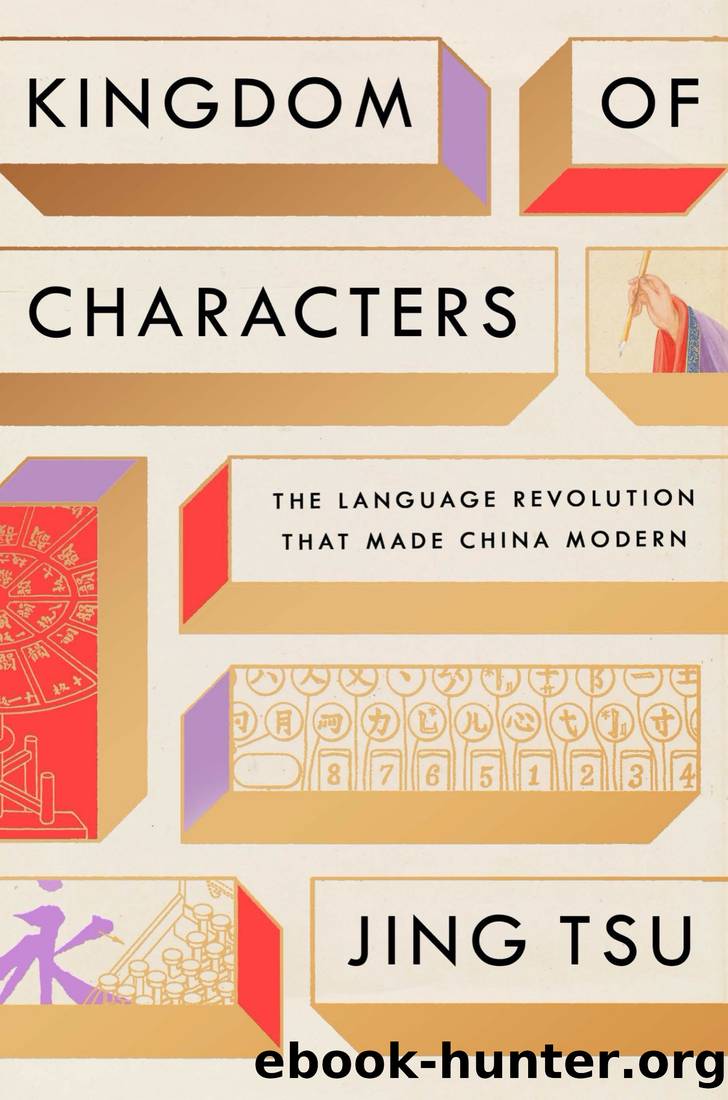Kingdom of Characters: The Language Revolution That Made China Modern by Jing Tsu

Author:Jing Tsu [Tsu, Jing]
Language: eng
Format: epub
Published: 2022-01-18T00:00:00+00:00
* * *
⢠⢠â¢
Contrary to popular belief, the credit for simplified characters in modern times cannot go to Mao and his committee alone. The first concrete proposal for character simplification was made in 1920, under the Nationalistsâ rule. The linguist and reformer Qian Xuantong, who extolled Lin Yutangâs character index system, advocated for reducing stroke counts overall. Simplification had already been in practice for centuries outside the formal courts and halls of learning. About 80 percent of current simplified characters existed before the mid-twentieth century, and of those about 30 percent had been in use before the third century.
Simplified script was formed by popular usage and frequently found in account books, invoices, medical prescriptions, and performance scripts for actorsâall documents for which it was more expedient to abbreviate characters than to write them out fully. Street vendors and entertainers skimped on strokes to make transactions and note taking easier on the spot. Some of the simplification also originated in calligraphy. The cursive and running styles favored fast, efficient, and minimal connections between strokes under the swift motions of the brush. Other simplified characters came from shamanistic and secret writings. Daoists used simplified characters to summon the spirit of past sages, while the Taiping rebels of a nineteenth-century sectarian Christian cult, led by a Chinese man, Hong Xiuquan, who believed himself to be Godâs second son and brother to Jesus, were the first to promulgate the official use of simplified characters in their documents, written records, and self-issued currency.
An important monument in the history of simplified Chinese writing, which otherwise features so few women, is a secret script, still used today, created by women themselves. Nüshu, literally âwomenâs script,â was a simplified writing system that used fewer strokes and gave women both literacy and a means of private communication with one another. It came from a small area in the southernmost tip of Hunan Province, where diverse ethnicities have historically resided. The script has been used for centuries and is believed by some to be as old as the oracle bone script, which contains the earliest examples of simplified writing. Women used this secret script to bypass the limits placed on them in traditionalist society and to create a world of literacy for themselves. Like children, they had limited access to written language and were restricted to the domestic realm, so nüshu was used mainly as an in-group, private form of communication. Its very existence puts a crack in the otherwise continuous presentation of writing as a mark of authority, the state, and patriarchal rulers.
Womenâs secret script powerfully took its inspiration from the stitching in embroidery. It incorporated crisscross patterns into the interweaving strokes of its slender, tightly vertical form, rather than the usual, more complicated and square structure of characters. Alternative or secret scripts in general were considered cultish, unsanctioned, and heterodox. They diverged from the orthodox full character forms and for that reason were occasionally purged by the authorities. Womenâs script, for instance, was persecuted as witchcraft for a time after the founding of the PRC.
Download
This site does not store any files on its server. We only index and link to content provided by other sites. Please contact the content providers to delete copyright contents if any and email us, we'll remove relevant links or contents immediately.
Cecilia; Or, Memoirs of an Heiress — Volume 1 by Fanny Burney(32434)
Cecilia; Or, Memoirs of an Heiress — Volume 2 by Fanny Burney(31871)
Cecilia; Or, Memoirs of an Heiress — Volume 3 by Fanny Burney(31854)
The Lost Art of Listening by Michael P. Nichols(7406)
Asking the Right Questions: A Guide to Critical Thinking by M. Neil Browne & Stuart M. Keeley(5635)
We Need to Talk by Celeste Headlee(5542)
On Writing A Memoir of the Craft by Stephen King(4863)
Dialogue by Robert McKee(4321)
Pre-Suasion: A Revolutionary Way to Influence and Persuade by Robert Cialdini(4148)
I Have Something to Say: Mastering the Art of Public Speaking in an Age of Disconnection by John Bowe(3840)
Elements of Style 2017 by Richard De A'Morelli(3307)
The Book of Human Emotions by Tiffany Watt Smith(3238)
Fluent Forever: How to Learn Any Language Fast and Never Forget It by Gabriel Wyner(3028)
Name Book, The: Over 10,000 Names--Their Meanings, Origins, and Spiritual Significance by Astoria Dorothy(2939)
Good Humor, Bad Taste: A Sociology of the Joke by Kuipers Giselinde(2903)
Why I Write by George Orwell(2874)
The Art Of Deception by Kevin Mitnick(2736)
The Grammaring Guide to English Grammar with Exercises by Péter Simon(2710)
Ancient Worlds by Michael Scott(2625)
